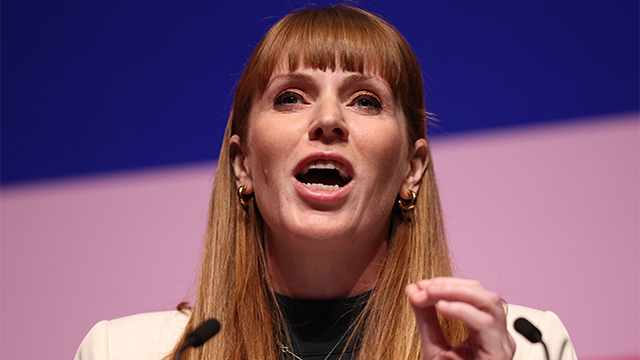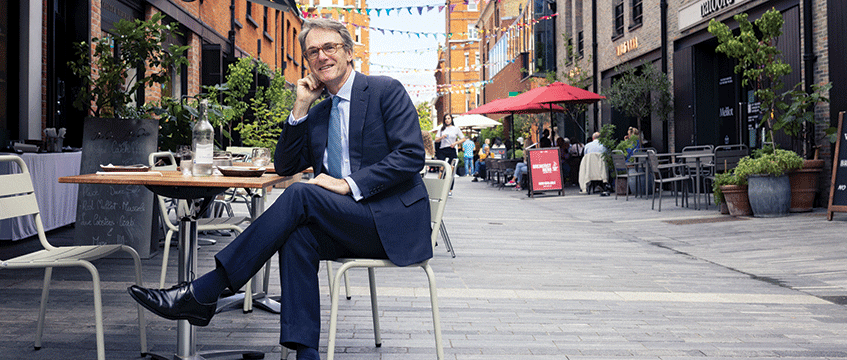Berlin has lagged behind its German counterpart cities, but there is increasing evidence that the German capital has switched into growth mode with new development plans beginning to emerge
It is a late start for Berlin but the German capital is finally catching up with other German cities such as Munich, Frankfurt and Hamburg, which have already put the property crisis behind them.
Berlin’s vacancy rate now stands at 8.7%, leaving an available stock of 1.3m m2. Developers are at last encouraged by the level of enquiries for vacant space and the falling off of incentives.
Estimates about the take-up of offices for this year vary, but some observers put it well above the 400,000m2 mark, exceeding last year’s figures of 376,000m2.
Over the past 10 years the Berlin office stock has doubled to reach more than 15m m2. Around 40% of the new stock was built in peripheral areas outside the inner city and now new projects still in the development pipeline and on the drawing board are likely to add another 2.7m m2. Jones Lang LaSalle’s estimates for the year 2000 show an additional 750,000m2 will come to market; of this figure, 55% will be taken up by owner-occupiers.
The turnaround has seen some sub-markets such as City-Ost, City West and Potsdamer Platz emerge as prime office locations, as has Potsdamer Platz. In these three locations vacancies are falling. “In Friedrichstrasse we used to offer tenants a choice between eight to 10 different buildings; today this has been reduced to two to three,” says Klaus Krägel, associate director at JLL.
Gendarmenmarkt, Unter den Linden and Pariser Platz are commanding the highest rents with Pariser Platz taking the lead. Here tenants are said to pay €426 (DM840) per m2 a year. For Gendarmenmarkt, rents range between €334 and €337 (DM600 and DM660). Incentives are on the decline although for lease agreements of five to 10 years tenants can negotiate three to six months rent-free periods and possibly some help with the fitting out.
The last development under construction in Gendarmenmarkt is Quartier 30. The €127.8m (DM250m) mixed-use scheme with offices, retail and residential space is developed by DG IMMOBILIEN PROJEKT, part of the DG Immobilien group, Invers Immobilien Company and Zentralverband Haus & Grund Deutschland. The project comprises five separate buildings with a total space of around 42,000m2. Completion is scheduled for mid-2001. The 14,000m2 Haus 1 was pre-sold to a German pension fund. Letting began in August and a law firm has already signed up for 40%. Haus 3 will be taken up by Haus & Grund as owner-occupier.
Check Point Charlie turnaround
Even the buildings at the southern end of Friedrichstrasse around Check Point Charlie are slowly filling up. Here tenants are still in a good position to negotiate incentives. In Friedrichstrasse, the rents range between €225 to €274 (DM444 to DM540) while in the side streets tenants pay around €203 (DM400).
Over the last 10 years, development activity tended to focus on City Ost, as well as in peripheral locations. Now development is spreading to City West. The most striking project among the new developments is Neues Kranzler Eck. Developed by open-ended funds manager DIFA (Deutsche Immobilien Fonds AG), the office and retail scheme is the first new building in years to come on the market on Kurfürstendamm, the city’s premier shopping street. Scheduled for completion in October, 85% of the 22,000m2 designated for retail is now let. The offices will be completed by mid 2001 with Cisco Systems and Regus already taking 8,500m2 of the 45,000m2.
“We think that the rents have bottomed out in City West leaving room for future rental growth,” says Antonius von Bismarck, senior portfolio manager at Hamburg Berlin Immobilien (HBI). For existing buildings von Bismarck sees the rent level at €152 to €213 (DM300 to DM420), while new developments can command a premium. A case in point is Neues Kranzler Eck which, according to DIFA, is letting on effective rents of €274 (DM540) per m2 a year.
Meanwhile, Potsdamer Platz has risen to become an office location in its own right with around 300,000m2 of office space being developed so far. The Sony Center, a development by the Sony Corporation, Tishman Speyer and Kajima Corporation and comprising 68,000m2 is now fully let. With 47,000m2 developed on a speculative basis, the project was a daring endeavour for its time. Rents are said to have reached €368 (DM720).
Still on Potsdamer Platz, HVB Projekt GmbH, a subsidiary of HypoVereinsbank, is developing the Parkkolonnaden. Acting as project manager for a consortium of owners the company has almost completed the first two of the five buildings. The scheme comprises 52,500m2 of offices; 10,000m2 is reserved for residential space and 7,500m2 for retail. Hugo Gensler, managing director of HVB Projekt GmbH, is pleased with the level of inquiries. “Though we only recently started with the letting, we have had around 30 serious inquiries.”
One of Berlin’s main difficulties has been that it lacked a clear profile. The city’s economy is still undergoing structural change, growth is lagging behind other German centres, and while on average the GDP is estimated to grow by 2.5% to 3% this year, the forecast for Berlin is a mere 1.5%. Nevertheless, there are some encouraging signs. Now that the government’s move to the new capital is completed and many of the lobbyists have set up shop in Berlin, the city is also attracting companies from some of the growth sectors like telecoms and media.
Oberbaum-City is one of the locations favoured by new media and design companies. The developer HVB Projekt has been successful in creating an attractive location for new economy companies to the former inner city industrial site. “We started by mapping out the strength and weaknesses of the location. Then we tried to identify companies which valued the advantages but did not mind the flaws,” says Gensler.
Today 80% of the buildings are let. One of the first companies to move to the area was the International Design Center. Other tenants include Gameplay from the UK and Pixelpark, an internet company. Rents vary according to specifications. In the nine-storey tower it can reach €219 (DM432), while for the more down-to-earth type offices tenants have to pay €146 (DM288).
Rise of the Spree area
Another attempt to generate a user-specific profile for a location is the initiative “media spree”, which defines the river Spree area in the central districts Mitte, Friedrichshain, and Kreuzberg. KapHag, one of the leaders in the German closed-end fund industry, is working on the “spreesinus” scheme in Friedrichshain, a project designed to become a nucleus for further development for the media industry. At the moment planning consent is being sought for the 34,500m2 of offices and 8,700m2 for residential. Asking rents in the area currently hover at €155 to €158m (DM306 to DM312), but the project hopes to achieve between €180 and €233 (DM360 and DM456).
Tenants looking at Berlin should not yet worry that they need to rush to secure space. The city does not have a legacy of prelets as there is still sufficient space available; the German average is around 18.3% for new developments; in Berlin it is a mere 2.7%. However, stock in good locations as well as quality properties are now likely to be absorbed in the foreseeable future. “I believe it is a good time for developers and investors to look at new projects. We see increasing demand this year and a number of larger lettings,” says Jutta Reimer, property manager of the 75,000m2 Top Tegel project, which has increased the letting from less than 50% two years ago to 86%.
|
Selected Berlin projects with planning consent |
|||||
|
Location |
Developer / investor |
Type of property |
Size in m2 |
Completion |
Status |
|
City East |
|||||
|
Pariser Platz |
Joint venture of ABG Allgemeine Bauträgergesellschaft & Bayerische Landesbank |
Mixed scheme |
5,400 offices 1,600 retail 1,200 residential |
October 2000 |
Under construction Retail partially let |
|
Gendarmenmarkt Quartier 30 |
DG Immobilien Projekt |
Offices and residential |
42,000 offices residential and retail |
Mid 2001 |
Under construction |
|
Friedrich-Carrée Friedrichstrasse |
Ed. Züblin Projektentwicklungs- GmbH |
Mixed scheme |
28,000 offices 8,000 retail 9,000 residential |
End 2002 |
Under construction, commercial space sold to a group of institutional investors |
|
Spreepalais am Dom |
Despa |
Offices |
21,000 |
n/a |
Groundworks started |
|
DomAquarée |
DIFA Deutsche Immobilien Fonds AG |
Mixed scheme |
18,000 offices 23,000 hotel & residential |
Autumn 2003 |
Due to start in 4th quarter 2000 |
|
City West |
|||||
|
Neues Kranzler Eck Kurfürstendamm / Joachimstaler Strasse |
DIFA Deutsche Immobilien Fonds AG |
Mixed scheme |
45,000 offices 22,000 retail |
1st half 2001 (offices) end of 2000 (retail) |
Under construction Retail: 85 % prelet Offices: 19 % prelet |
|
Potsdamer Platz |
|||||
|
Parkkolonnaden |
Consortium with HVB Projekt acting as project manager |
Mixed scheme |
57,500 offices 10,000 residential 7,500 retail |
Office blocks: Mid 2001 Residential: End 2001 |
Under construction Haus 1 + 2 are ready for fitting out work, negotiations with investors for these buildings underway |
|
Lenné-Dreieck |
Beisheim Holding |
Mixed scheme |
110,000 of which 15,000 are offices |
2003 |
Planning stage |
|
Friedrichshain |
|||||
|
Holzmarktstrasse |
KapHag |
Offices and residential |
34,500 offices 8,700 residential |
2003/2004 |
Awaiting planning consent |
|
Schilling-Brücken-Kopf Schillingbrücke |
OMG |
Mixed scheme |
3,500 offices hotel, residential |
October 2000 |
Nearly completed |
|
Stralauer Platz Berlin-Mitte |
Hanseatica HPE Property |
Themed property (low energy building) |
19,000 offices and light industrial |
End 2001 |
Groundworks started |
|
Urban Center Postbahnhof Berlin Friedrichshain |
Deutsche Post |
Urban Renewal Project 40,000 site |
Zoning in progress |
||
|
Spreespeicher Stralauer Allee |
IVG/Wertkonzept |
Office lofts |
37,000 |
May 2001- January 2002 |
Under construction |
|
Source: EuroProperty |
|||||










